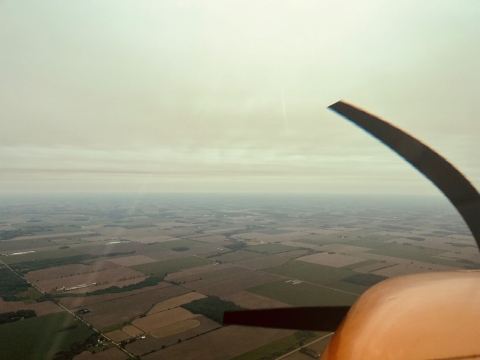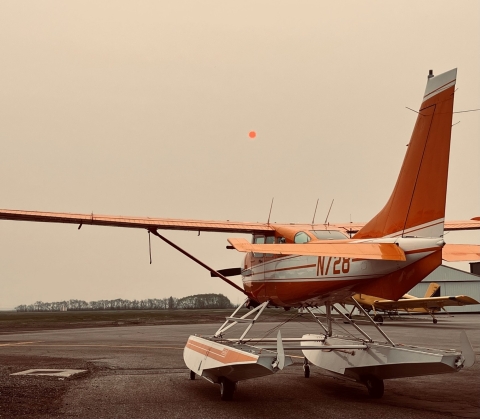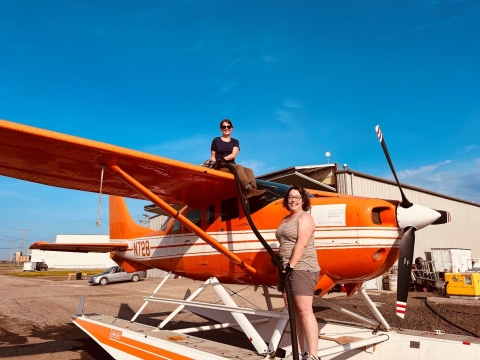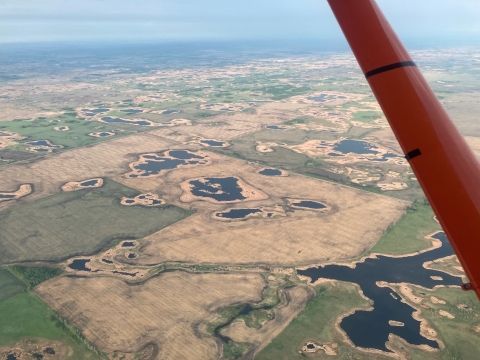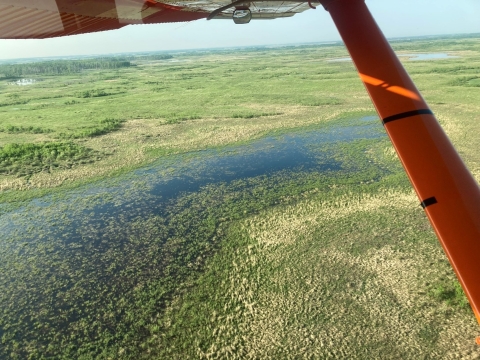This was a year with many challenges for the Southern Manitoba crew during the waterfowl surveys. On the trip from Maine to Manitoba, my plane started having some engine issues. These took about a week to resolve before I could continue flying west and eventually settle in our final destination of Brandon, Manitoba. Once we finally got settled, the weather became another barrier, delaying us further, and making it difficult to fly a complete survey. It truly was the worst weather I have experienced in all my eleven years flying this survey. Some days the smoke from the wildfires made flying surveys very difficult because it reduced out visibility and on other days, our options were severe low-level wind shear to the east or reduced visibility and thunderstorms to the west! On those days, we stayed put and crossed our fingers for better weather the next day. Our crew was frustrated, to say the least!
However, we eventually did get some flying in, and I was happy to have Stacy Salvevold as my observer this year. Stacy is a wildlife biologist with U.S. Fish and Wildlife Service Fergus Falls Wetland Management District in Minnesota. She has a lot of experience participating in waterfowl surveys both on the ground and in the air throughout the US prairies. While it was her first year on the Waterfowl Breeding Population and Habitat Survey, she has flown other aerial surveys including scaup surveys with Fred Roetker (now retired biologist-pilot), and many long hours of easement flying with Brian Lubinski (now retired biologist-pilot) and Garrett Wilkerson (biologist-pilot). With all the hours she has logged in the air nothing really phases her and she has been a great addition to the survey crew!
Once we started surveying, we noticed that habitat conditions throughout the area seemed to be abnormally dry this year, especially when compared to the deluge we experienced in 2022. However, in the areas that still contained good duck habitat and higher densities of prairie potholes, semi-permanent and permanent wetlands-wetlands were still holding on to plenty of water. These wetlands displayed an increased amount of emergent vegetation and wider margins of cattails, which should provide plenty of nesting cover for a variety of duck species.
Unlike last year, we did not observe many seasonal wetlands, there was no sheet water, and ditches were dry everywhere we flew. Finally, agricultural activities were already under way early in May due to the drier conditions this year and we observed a lot more clearing and tilling of wetlands this spring compared with the previous year. Overall, conditions ranged from fair-to-good in most areas, and towards the end of the month, the area started to benefit from some increased precipitation resulting from stalled fronts and daily thunderstorms throughout the region.


